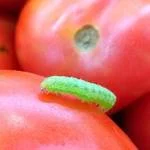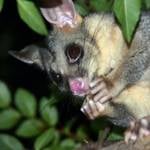
How to Grow Pea Seeds
Grow Guide #2302
Family: Fabaceae
Binomial name: Pisum sativum
Life Cycle: Annual
This 'How to Grow' guide details everything a home gardener needs to know to plant, grow and care for Peas (Pisum sativum).
Peas be categorised as snow peas, sugar snap peas or shelling peas depending on the maturity of the pods when harvested and whether the entire pod or only the seeds inside are eaten. Pea plants can also be divided into bush and climbing varieties depending on their growth habit. Bush varieties are shorter plants that do not require staking. Climbing varieties grow taller and require a tripod or trellis to support their growth.
When to Sow Pea Seeds
Pea is a cool season crop. Use the table below to identify the best time of year to sow pea in your climate.
| JAN | FEB | MAR | APR | MAY | JUN | JUL | AUG | SEP | OCT | NOV | DEC | |
|---|---|---|---|---|---|---|---|---|---|---|---|---|
| Cool | ||||||||||||
| Temperate | ||||||||||||
| Sub-Tropical | ||||||||||||
| Tropical | ||||||||||||
| Arid |
Preparation
Pea plants are best grown in full sun. Choose a location that will receive at least 6 hours of full sun each day.
Pea plants need a well drained soil enriched with plenty of organic matter. Prepare soil by weeding it thoroughly, digging it over to loosen it and adding aged animal manure or compost. Keep the area free of weeds until planting. Learn more about preparing soil for planting here.
Optional: Pea plants grow best in soil that is alkaline. If soil pH is under 7, apply dolomite (calcium magnesium carbonate) or garden lime (calcium carbonate) in powder or liquid form at the recommended rate and water in well prior to planting. Lime increases the alkalinity (or pH) of soil, making nutrients more available to some plants. Learn more about preparing soil for planting here.
How to Sow Pea Seeds
Pea seeds grow best when they are sown directly into the garden.
- Sow seeds directly in the garden 20mm deep and 20cm apart, with rows 100cm apart.
- Keep soil moist but never wet or dry.
- Seeds should germinate in around 7-21 days at a soil temperature of 15-20°C.
- Young seedlings will need protection from pests, pets and weather until they are established.
How to Grow Peas
Pea plants may need watering during the growing season. Water when the soil is dry about 5cm below the surface (test this by scratching away a little soil with your finger). Water deeply in the early morning or late afternoon. Avoid watering the leaves of plants to avoid fungal diseases. Learn more about watering here.
If soil was well prepared no extra fertiliser should be necessary. In poor soil or to give your plants an extra boost, application of a balanced fertiliser or one formulated for fruit and vegetables can be beneficial:
- Apply slow release fertiliser at the recommended rate when transplanting or when seedlings are 5-10cm tall.
- Apply liquid fertiliser at the recommended rate and frequency while plants are fruiting or flowering.
Climbing varieties only: Pea plants need to be staked for support. Use a sturdy stake or grow plants alongside a trellis or tripod. As plants grow, tie stems gently to the support using twine or plant ties. Make sure you have the support in place when you sow seed or transplant seedlings to avoid disturbing the plant’s roots later.
How to Harvest Peas
Peas should be ready to harvest in approximately 60-80 days.
Snow peas and sugar snap peas are ready to harvest when the pods are large enough to eat. Shelling peas are ready to harvest when the pods are full and plump but still crisp. Harvest pods by cutting with snips/secateurs. Harvest regularly to encourage more pods. For shelling peas, break open the pods, remove the peas and discard the pods. Whole pods or shelled peas can be stored short term in the fridge. For longer term storage, shelled peas can be blanched and frozen.
Common Problems when Growing Peas
Like all plants, pea is susceptible to some pests, diseases and other problems. Below is a list of the most common problems gardeners encounter when growing pea plants:
 Armyworms, cutworms and other caterpillars can all eat the inside of fruit, making it inedible. Young caterpillars burrow into soft fruit, leaving just a small telltale hole on the fruit’s skin. Monitor fruit and remove any caterpillars you see. If necessary use insect exclusion netting or fruit bags to physically protect the fruit, or spray with Dipel.
Armyworms, cutworms and other caterpillars can all eat the inside of fruit, making it inedible. Young caterpillars burrow into soft fruit, leaving just a small telltale hole on the fruit’s skin. Monitor fruit and remove any caterpillars you see. If necessary use insect exclusion netting or fruit bags to physically protect the fruit, or spray with Dipel. Possums, birds and other animals can ruin a large percentage of your harvest overnight. Physically exclude pests by using netting or cages, or try spraying plants with a pungent homemade spray made from garlic, fish oil or mustard.
Possums, birds and other animals can ruin a large percentage of your harvest overnight. Physically exclude pests by using netting or cages, or try spraying plants with a pungent homemade spray made from garlic, fish oil or mustard..jpg) Powdery mildew is caused by fungal spores reproducing on the leaves of plants. First showing as white spots on leaves, affected areas can spread quickly to cover the entire leaf surface. While rarely fatal, powdery mildew can reduce yields. Water plants at soil level (not on leaves) to prevent spreading spores, allow good air flow between plants, remove affected leaves and if necessary spray with an appropriate fungicide or homemade spray. Read more here about powdery mildew here.
Powdery mildew is caused by fungal spores reproducing on the leaves of plants. First showing as white spots on leaves, affected areas can spread quickly to cover the entire leaf surface. While rarely fatal, powdery mildew can reduce yields. Water plants at soil level (not on leaves) to prevent spreading spores, allow good air flow between plants, remove affected leaves and if necessary spray with an appropriate fungicide or homemade spray. Read more here about powdery mildew here..jpg) Pea beetles (Bruchus pisorum, also known as pea weevil) are 5mm long brown to grey beetles that emerge from hibernation in spring. Adult beetles feed on the leaves and flowers of plants. Female beetles lay single eggs on the outside of pea pods. Larvae then burrow into pea seeds to feed, emerging as adults around 40 days later. Monitor crops during spring and use insecticide spray if adult beetles are found; dispose of infested seed. Learn more about pea beetles here.
Pea beetles (Bruchus pisorum, also known as pea weevil) are 5mm long brown to grey beetles that emerge from hibernation in spring. Adult beetles feed on the leaves and flowers of plants. Female beetles lay single eggs on the outside of pea pods. Larvae then burrow into pea seeds to feed, emerging as adults around 40 days later. Monitor crops during spring and use insecticide spray if adult beetles are found; dispose of infested seed. Learn more about pea beetles here. Rust (Puccinia sp.) is a fungal disease that causes brown to orange raised spots or patches to appear on foliage. Fungal spores are spread by wind or water to neighbouring plants, especially in temperatures of 10-20C and when humidity is high. To manage rust, space plants to avoid overcrowding, grow them in the recommended amount of light (eg full sun), do not over fertilise crops, remove dead plants and practice crop rotation. Read more about rust fungus here.
Rust (Puccinia sp.) is a fungal disease that causes brown to orange raised spots or patches to appear on foliage. Fungal spores are spread by wind or water to neighbouring plants, especially in temperatures of 10-20C and when humidity is high. To manage rust, space plants to avoid overcrowding, grow them in the recommended amount of light (eg full sun), do not over fertilise crops, remove dead plants and practice crop rotation. Read more about rust fungus here. Slugs and snails are molluscs that feed on tender leaves and shoots, mostly at night, leaving slimy trails behind them. Control them by removing their hiding places, keeping free range poultry, collecting them by torchlight or by placing traps. Read more about slugs and snails here.
Slugs and snails are molluscs that feed on tender leaves and shoots, mostly at night, leaving slimy trails behind them. Control them by removing their hiding places, keeping free range poultry, collecting them by torchlight or by placing traps. Read more about slugs and snails here.


.png)






